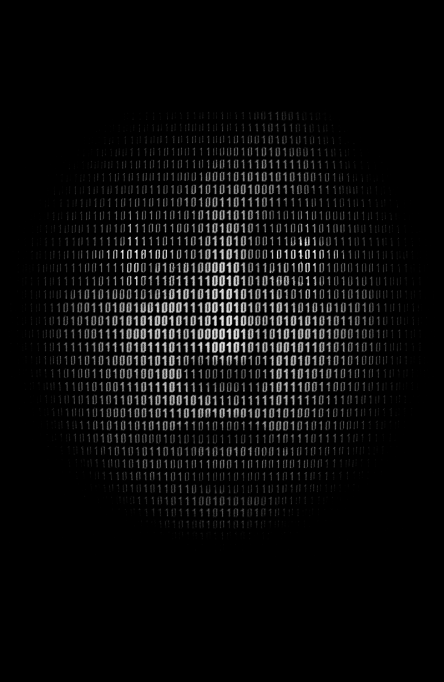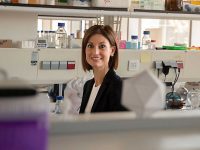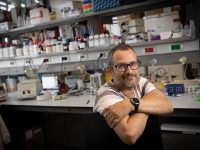Human enhancement and functional diversity
Ethical concerns of emerging technologies and transhumanism

The concepts of posthuman, transhuman, transhumanism and human enhancement, and their use of emerging technologies, are described together with their scientific and social implications. Genome editing techniques for enhancement purposes, as well as their scientific, societal, and ethical drawbacks are specifically discussed. In particular, we focus on a perspective of personal and collective responsibility and social inclusion, considering all people, with their functional diversity or different abilities. Pros and cons of proposals for radical transformation as endorsed by transhumanism (genome editing), their impact on future generations and on subjects with functional diversity, and the need of a global ethical frame, are discussed.
Keywords: transhumanism, human enhancement (HE), functional diversity, genome edition, future generations.
Transhumanism is a global ideology promoting radical changes in humans. First mentioned by Julian Huxley in 1957, today it is scattered around the world, including academia and industry. A valid reference is Humanity+ (the World Transhumanist Association), whose web page defines transhumanism as «improving the human condition through applied reason, especially by developing and making widely available technologies to eliminate aging and to greatly enhance human intellectual, physical, and psychological capacities» (Humanity+, 2021). It also describes the posthumans as «possible future beings whose basic capacities so radically exceed those of present humans as to be no longer unambiguously human by our current standards», and a transhuman as «an intermediary transition between the human and a possible future human (Human 2.0) or the posthuman».
The transhumanist philosophical vision of human nature is a naturalist one, considering humans as matter, such as materialism, empiricism, mechanicism, or positivism do. Other visions, such as the one for which culture and freedom build human nature (sociocultural, existentialism) or the classical one, including the Aristotelian-Thomistic, and the personalist (ontology, phenomenology) visions, are in contrast with that sustained by transhumanism (Postigo Solana, 2019). Obviously, depending on the vision adopted, the bioethical assessment of whatever changes one performs in human nature will be significantly different.

Transhumanists see aging as a disease that we could control and overcome, even though death will remain inescapable for humans./ Cristian Newman-Unsplash
Human enhancement (HE) is a wider concept, being defined as any temporal or permanent improvement of the organic or functional traits of humans by means of natural or, particularly, artificial technologies (Serra, 2016a). HE endorses interventions in humans, regardless of whether they suffer from any pathological or diverse condition or not, and it is explicitly intended to allow their receivers to acquire a capability that was not present before. This distinction between a therapeutic and a non-therapeutic use of these technologies is relevant and has significant ethical implications.
HE embraces the so-called three pillars of transhumanism: super-intelligence, super-longevity, and super-wellbeing. Thus, «a superintelligent intellect […] is one that has the capacity to radically outperform the best human brains in practically every field, including scientific creativity, general wisdom, and social skills» (Humanity+, 2021). The extraordinary progress of neuroscience is helping us to better understand how our brain is like and how it works, both to optimize its performance and to better fight neural diseases, but we are still far from being able to emulate, transfer or copy the human brain into non-biological substrates or to build artificial (general) intelligences that surpass ours (López de Mántaras, 2016).
Super-longevity means «to extend human life […]. The goal is more healthy, happy, productive years. Ideally, everybody should have the right to choose when and how to die – or not to die» (Humanity+, 2021). Transhumanists see aging as a disease that we could control and overcome, but neither humans can avoid death, nor cryonics is a scientifically demonstrated alternative.
Wellbeing is based on «the principles of bodily autonomy and procreative liberty […] The use of genetic medicine or embryonic screening to increase the probability of a healthy, happy, and multiply talented child is a responsible and justifiable application of parental reproductive freedom» (Humanity+, 2021). However, this approach has a hypothetical viability because, which or how many genes should be altered to increase human intelligence or mental health or height or whatever other human trait? Would it be a satisfactory limit, or would humankind be embarked in an endless HE crescendo?
Emerging technologies
A leading transhumanist, Ray Kurzweil, introduced the concept of singularity, a turning point in human history he forecasts in 2045; the world would be unrecognizably different and difficult for humankind to realize how our own future will be like:
An analysis of the history of technology shows that technological change is exponential […] The Singularity envisions the emergence of human-like intelligent entities […] capable of passing the «Turing test» […], the question arises as to whether these «people» are conscious, or just appear that way […] In my view, the most significant implication of the Singularity will be the merger of biological and nonbiological intelligence. (Kurzweil, 2001)
Some of his futuristic views may be unrealistic or exaggerated but the progress of emerging technologies is approaching humankind to a future world that was almost unthinkable some decades ago. These technologies are often referred to as NBIC, standing for nanotechnology, biotechnology, information and communication technologies and cognitive sciences. They range from computing power to data storage (big data), to Internet and the overwhelming presence of smart devices, e.g., mobile phones or connected sensors (the Internet of things), from robotics and AI to biological techniques such as genome editing (used here as equivalent to engineering or modification), neuroscience or nanotechnology, and 3D printing. All these advances are creating tipping points, moments at which a technology will cross a threshold and trigger sudden and significant change (Butler, 2016, as cited in Serra, 2016b).
«Human enhancement endorses interventions in humans, regardless of whether they suffer from any pathological or diverse condition or not»
However, there is an understandable concern among many scientists and non-scientists about the possible drawbacks of this apparent unbeatable progress. In this sense, the Future of Life Institute drafted an open letter directed to the broader AI research community and circulated it in their 1st conference in Puerto Rico in January 2015 calling for extensive research to maximize the benefits of artificial intelligence (AI) and avoid its potential pitfalls. There are reasonable short-term concerns in machine ethics such as with autonomous vehicles (civilian drones, self-driving cars, etc.), with lethal intelligent autonomous weapons, or privacy concerns with AI and big data, and how to best manage the economic impact of AI and robotics on future jobs. There are also some more long-term concerns, such as existential risk to humans coming from artificial general intelligence and superintelligence.
On the other hand, the advent of genome editing techniques, including CRISPR, prompted a conference in January 2015 in Napa Valley (USA) that agreed on ensuring that their application is performed safely and ethically (Baltimore et al., 2015). It was proposed to strongly discourage any attempts at germline genome modification for clinical application in humans, to promote discussion forums, to encourage and support transparent research to evaluate the efficacy and specificity of these techniques and to convene global and transversal representatives of experts and citizens for future policies.
Genome editing
The growing availability of novel and more precise genetic editing techniques, both in therapy («negative» applications) and for HE purposes («positive» applications), raises controversy. Indeed, there are not only potential benefits but also harms of heritable human genome editing to prospective parents, particularly to women, given that they are particularly challenged considering their essential role in reproduction (e.g., hormonal stimulation and egg retrieval, pregnancy risks, labour disadvantages, social pressure, etc.), to children, to society and to the gene pool that arise bioethical concerns (Baylis, 2019, pp. 83–93).
Natural selection has allowed the survival of the fittest, but humans have also changed the medium using their unique abilities through ethical-weighed projects, which means that not everything that is technically possible is ethically acceptable, particularly when there are future contingencies. These situations require an ethical judgement, sensible options between extreme ecologism and radical eugenics, i.e., artificial interventions in the evolutionary process, which HE supporters explicitly defend, owing to a utopic positivism (Gracia, 2015).
«Which or how many genes should be altered to increase human intelligence, mental health, height, or whatever other human trait?»
Moreover, when genome editing techniques are used, in either somatic or germline cells, there is the possibility of mosaicism, off-target effects that can cause genomic instability, epigenetic changes, or immune/genotoxic effects, as well as effects on the target but with unintended consequences. Several experts warn us of the need for adequate ethical scrutiny before applying these techniques, particularly to human germline cells or embryos (Baltimore et al., 2015). Indeed, a careful assessment of its impact is due because this type of techniques
targets future generations’ health and well-being by reducing the diversity of the human gene pool. This can have two negative repercussions: 1) reduction of heterozygosity, the latter being associated with a health or performance advantage; and 2) uniformization of the genes involved in reproductive recombination, which may lead to the health risks involved in asexual reproduction. (Petre, 2017, p. 328)
The transmission of embodied changes and its unpredictable effects to offspring, including spontaneous mutations or its interaction with other genetic variants and with the environment, remain also to be solved. Thus, although it would be better if those genome-altering germline interventions could be adequately controlled (Petre, 2017), it is difficult in the practice to guarantee their reversibility or modification.
In addition, relying exclusively on the modification of genes is flawed. Genome-wide association studies show limited human trait gene accountability, e.g., have successfully identified inherited genome sequence differences that explain only 20 % of the 50 % heritability of intelligence (Plomin & von Stumm, 2018). Thus, genetic editing for the enhancement of human traits may not be a guarantee of success, as other (environmental) factors often escape from our control.
It would be then irresponsible to proceed with clinical uses of heritable genome modifications until safety and efficacy issues have been resolved and there is broad societal consensus (Baltimore et al., 2015). Notwithstanding, He Jiankui announced in November 2018 that he deliberately modified the genome of two twin healthy embryos to protect them against HIV and that they had been safely born. A WHO panel proposal of a new global registry of all CRISPR human experiments, or a request of a Global Genome Editing Observatory and ARRIGE (Association for responsible research and innovation in genome editing), a responsible global governance initiative, surged as reaction (Baylis, 2019).
Social impact and functional diversity
The future social risks of an asymmetric or coercive application of human genome editing, with the possible result of improved (richer) and non-improved (poorer) humans in dystopic scenarios, merit particular attention. Indeed, there is an often-disregarded voice that poses a significant objection to HE supporters aiming at «improving» humans artificially: the communities of people with functional diversity. This term, first proposed by Romañach (who had a posttraumatic tetraplegia) and Lobato in 2005 to replace previous terms such as disabled, impaired, or handicapped, which bear negative or non-inclusive meanings (Palacios & Romañach, 2006), has also been used by us when discussing HE (Serra, 2016b).

Posthuman. Artistic rendering by David Molina Gadea. In A. Cortina & M. A. Serra (Coord.). (2021). ¿Humanos o posthumanos? Singularidad tecnológica y mejoramiento humano. Fragmenta Editorial.
Although these people would be among those first affected by the application of genome editing technology for therapeutic purposes, they express different points of view, some willing to and some not. Above all, they «caution that if policymakers do not consult them and their families, these technologies could be used unthinkingly, in ways that harm patients and society, today and in the future» (Check Hayden, 2016, p. 403). Indeed, «hearing the voices of people who live with these conditions is really important», says the WHO expert Tom Shakespeare (who suffers achondroplasia), or as it goes «nothing about us without us» (Check Hayden, 2016, p. 405). Thus, their presence in ethics and policy panels should always be guaranteed just for this reason (Baylis, 2019).
However, if we adopt a sharper approach, we should eliminate any distinction between disabled and normal humans and recognise that we are all different, each one with our own specificities, and that there is no such thing as normality, but that «diversity is something inherent to humankind and must be thus appreciated» (Palacios & Romañach, 2006, p. 207). It is then quite understandable that many «disabled» feel threatened in their rights and dignity by new genome editing techniques and by how some scientists expressed the way they could negatively affect them (Palacios & Romañach, 2006). Indeed, this happens right now with the elimination of human embryos and foetuses bearing what some may consider a threatening physical or cognitive disability, which also implies a greater discrimination, stigmatisation, and marginalization of those individuals, e.g., Down syndrome and deaf communities (Baylis, 2019). Their vindication of a full respect of their human dignity can be extended to all humankind, as any «normal» human could feel the same way if they are not a receiver, either voluntarily or not, of a certain «improvement». Thus, if radical HE would be adopted
those who were not enhanced would […] be disabled, because they would be in a ‘harmed condition’ with respect to the possible alternative states; those who would not enhance others – parents not enhancing their children, for instance – would be guilty of harming them; those who chose not to enhance themselves would be harming themselves. (Franssen, 2014, p. 172)
Thus, a distinction of non-enhanced from enhanced humans, as transhumanists propose, could lead to a reductionist vision with a subsequent discrimination of the former with respect to the latter. The «ideal» human thus pursued, i.e., «designed» with the «best» genes, would mean «improved» with respect to the current ones, and that «difference» seen as «disability», prompting more a societal than a biological worry to humankind (Baylis, 2019, pp. 6–7). However, humans with functional diversity enrich all of us as we are all different but share the same nature and dignity; indeed, «disability studies make bioethics more alert to discriminatory effects» (Rehman-Sutter et al., 2014, p. 16).
Universal ethical guidelines
There is not a global ethical code in force owing also to different philosophical, cultural, and religious visions across the world, but there are different non-coincident international and national ethical declarations on human genome editing (Baylis, 2019). Interestingly, there are two recent reports focussing on the acceptability of those non-therapeutical interventions if inequalities are reduced (National Academies of Sciences, Engineering and Medicine, 2020; Nuffield Council on Bioethics, 2018).
On the other hand, there are three relevant declarations to be underscored. The Universal Declaration on the Human Genome and Human Rights states: «The human genome underlies the fundamental unity of all members of the human family, as well as the recognition of their inherent dignity and diversity […] is the heritage of humanity» (art. 1) and «Everyone has a right to respect for their dignity and for their rights regardless of their genetic characteristics» (UNESCO, 1997, art. 2a). The International Declaration on Human Genetic Data indicates: «a person’s identity should not be reduced to genetic characteristics, since it involves complex educational, environmental and personal factors and emotional, social, spiritual and cultural bonds with others and implies a dimension of freedom» (UNESCO, 2003, art. 3). The Universal Declaration on Bioethics and Human Rights establishes: «The impact of life sciences on future generations, including on their genetic constitution, should be given due regard» (UNESCO, 2005, art. 16). This scenario urges humankind to take this issue seriously being
a call for us to take collective responsibility for our biological and social future. In answering this call, we need to reflect on what kind of world we want to live in, and how we can contribute to building that world. (Baylis, 2019, p. 220)
Many of us are convinced that we all share equal dignity and rights, each one with their specific traits or functional diversity, regardless how «(im)perfect» we could be. Alternatively, transhumanists and enhancers consider artificial HE to be a «moral duty», thus jumping into a reductionist view of the future human, that would inevitably lead us to a biotechnological-oriented society, with «valid» (posthuman) and «invalid» (subhuman) subjects. Thus, «may our decisions be inclusive and consensual […] characterized by wisdom and benevolence» (Baylis, 2019, p. 221), without the blurriness of technology promising us transformations in human embodiment, and focus more on the common good of all humans than in an enhancement-driven discrimination, which looks more a threaten than a moral goal.
References
Baltimore, D., Berg, P., Botchan, M., Carroll, D., Charo, R. A., Church, G., Corn, J. E., Daley, G. Q., Doudna, J. A., Fenner, M., Greely, H. T., Jinek, M., Martin, G. S., Penhoet, E., Puck, J., Sternberg, S. H., Weissman, J. S., & Yamamoto, K. R. (2015). A prudent path forward for genomic engineering and germline gene modification. Science, 348(6230), 36–38. https://doi.org/10.1126/science.aab1028
Baylis, F. (2019). Altered inheritance. Harvard University Press.
Check Hayden, E. (2016). Should you edit your children’s genes? Nature, 530(7591), 402–405. https://doi.org/10.1038/530402a
Cortina, A., & Serra, M. A. (Coord.). (2021). ¿Humanos o posthumanos? Singularidad tecnológica y mejoramiento humano. (3ª ed.). Fragmenta Editorial.
Franssen, T. (2014). Prometheus descends: Disabled or enhanced? John Harris, human enhancement, and the creation of a new norm. In M. Eilers, K. Grüber, & C. Rehman-Sutter (Eds.), The human enhancement debate and disability (p. 161–182). Palgrave Macmillan. https://doi.org/10.1057/9781137405531_9
Gracia, D. (2015). Mejoramiento humano. ¿De qué estamos hablando? In C. Ortega Esquembre, A. Richart Piqueras, V. Páramo Valero, & C. Ruiz Rubio (Eds.), El mejoramiento humano (p. 20–30). Comares.
Humanity+. (2021). FAQ. https://humanityplus.org/transhumanism/transhumanist-faq/
Kurzweil, R. (2001). The law of accelerating returns. https://www.kurzweilai.net/the-law-of-accelerating-returns
López de Mántaras, R. (2016). Algunas reflexiones sobre el presente y futuro de la inteligencia artificial. In A. Cortina & M. A. Serra (Coord.), Humanidad∞. Desafíos éticos de las tecnologías emergentes (p. 89–103). Ediciones Internacionales Universitarias.
National Academies of Sciences, Engineering and Medicine. (2020). Heritable human genome editing. The National Academies Press. https://doi.org/10.17226/25665
Nuffield Council on Bioethics. (2018). Genome editing and human reproduction: Social and ethical issues. https://www.nuffieldbioethics.org/publications/genome-editing-and-human-reproduction
Palacios, A., & Romañach, J. (2006). El modelo de la diversidad. La bioética y los derechos humanos para alcanzar la plena dignidad en la diversidad funcional. Diversitas.
Petre, I. (2017). Future generations and the justifiability of germline editing. The Journal of Medicine and Philosophy, 42(3), 328–341. https://doi.org/10.1093/jmp/jhx003
Plomin, R., & von Stumm, S. (2018). The new genetics of intelligence. Nature Review Genetics, 19(3), 148–159. https://doi.org/10.1038/nrg.2017.104
Postigo Solana, E. (2019). Bioethics and transhumanism from the perspective of human nature. Arbor, 195(792), a507. https://doi.org/10.3989/arbor.2019.792n2008
Rehman-Sutter, C., Eilers, M., & Grüber, K. (2014). Refocusing the enhancement debate. In M. Eilers, K. Grüber, & C. Rehman-Sutter (Eds.), The human enhancement debate and disability (p. 1–20). Palgrave Macmillan. https://doi.org/10.1057/9781137405531_1
Serra, M. A. (2016a). Mejoramiento humano en el tercer milenio. Mitos y realidades. In A. Cortina & M. A. Serra (Coord.), Humanidad∞. Desafíos éticos de las tecnologías emergentes (p. 157–200). Ediciones Internacionales Universitarias.
Serra, M. A. (2016b). Tecnologías emergentes para uso clínico: Edición del genoma humano. Decisiones en el presente e impacto en las generaciones futuras. In A. Cortina & M. A. Serra (Coord.), Singulares. Ética de las tecnologías emergentes en personas con diversidad funcional (p. 85–108). Ediciones Internacionales Universitarias.
UNESCO. (1997). Universal Declaration on the Human Genome and Human Rights. https://en.unesco.org/themes/ethics-science-and-technology/human-genome-and-human-rights
UNESCO. (2003). International Declaration on Human Genetic Data. https://en.unesco.org/themes/ethics-science-and-technology/human-genetic-data
UNESCO. (2005). Universal Declaration on Bioethics and Human Rights. https://en.unesco.org/themes/ethics-science-and-technology/bioethics-and-human-rights





